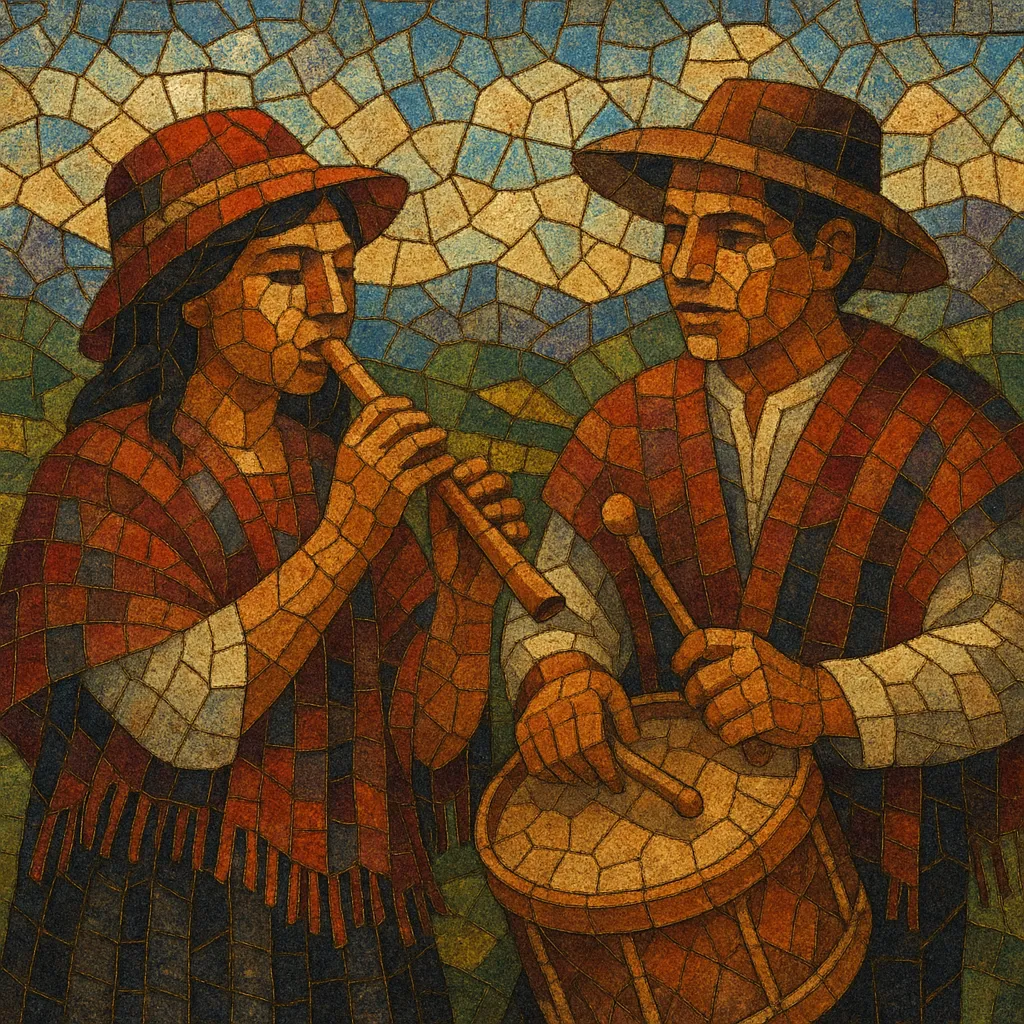Chimaychi (also spelled Chimaycha in Ayacucho Quechua) is a seasonal Andean song-and-dance tradition from the highlands of Ayacucho, Peru. It is typically performed by groups of unmarried youths during the rainy/planting season, and centers on playful courtship, nature, and community life.
Musically, Chimaychi features brisk duple-time grooves with a lilting Andean swing (often reflecting sesquiáltera feel), pentatonic-leaning melodies, and strophic, call-and-response vocals sung in Quechua. Ensembles commonly include pinkuyllu (duct flutes) and the small tinya drum; in more urbanized settings, charango, violin, and sometimes harp double or replace the flutes. The vocal timbre is bright and penetrating, with antiphonal exchanges between women’s and men’s groups and abundant vocables.
As both a music and a dance, Chimaychi is communal and outdoors-oriented, linked to agricultural cycles, festive procession, and social bonding among rural youth.
Chimaychi emerged in the Quechua-speaking communities of Ayacucho, Peru, as a youth-focused courtship and planting-season tradition. Its roots draw on pre-Hispanic Andean vocal practices and communal wind-and-drum ensembles tied to the agricultural calendar. Over time, colonial-era string instruments (charango, violin, harp) blended with pinkuyllu flutes and tinya to diversify accompanying textures.
During the 20th century, regional fiestas, local radio, and town festivals helped codify Chimaychi’s repertory and performance norms. Migration to Ayacucho city and later to Lima brought the style into contact with urban Andean music-making, where some performers adapted the flute-and-drum sound to charango/violin/harp formats without losing the courtship themes and Quechua lyrics.
Social upheavals affecting Ayacucho in the late 20th century disrupted rural festivities, yet community ensembles maintained Chimaychi within local cycles and diaspora networks. Documentation by folklorists and cultural promoters preserved repertoires and dance choreographies, sustaining intergenerational transmission.
Today, Chimaychi remains a living village tradition performed at planting and carnival-time events, with youth leading antiphonal singing and dance. Its melodic turns, Quechua poetics, and rhythmic feel have filtered into contemporary Andean folk revivals and stage presentations, and they continue to shape how Ayacucho identity is voiced in broader Peruvian folk culture.


